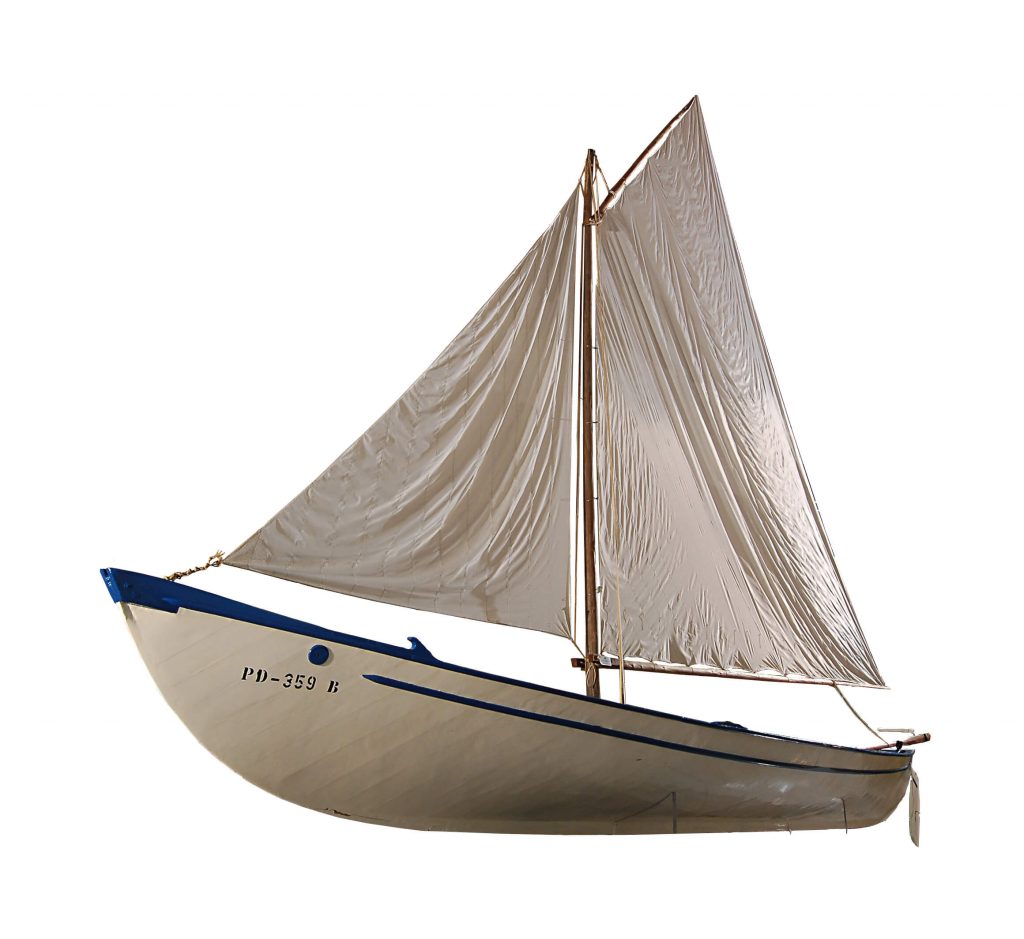Author: João Basílio da Silva (Caulker)
Date: 1953
Dimensions: H. 1 270 x L. 110 x W. 199 cm
Reference: MCM1464
On display: Parque Atlântico Shopping Center, Ponta Delgada
Notes: By the end of the 18th century, Azorean ports hosted dozens of whaling boats coming from America, and their integration of Azorean crewmen, as those praised in the work Moby Dick, by Herman Melville, was usual. In São Miguel, the hunt of the sperm whale (Physeter macrocephalus) took place all year round, summer being the period of greatest profitability. During that time, about 10, 12 or even 17 sperm whales were hunt on average, per boat. The higher the number, the greater was the social status earned by the boat officer.
São Miguel whaling boats were all built in the Island, almost always by local shipwrights, while the boat names were assigned by the owners.
Currently integrating Carlos Machado Museum collection, Saint Joan whaling canoe was one of those boats and its story begins in the middle of the 20th century.
Commissioned by União das Armações Baleeiras de São Miguel, Lda. (United Whaling Shipowners of São Miguel), its construction began on May, 13th 1952 and its registration took place in January of the following year by the harbormaster of Ponta Delgada.
With a maximal capacity of 8 people, this whaling canoe has two sails and six oars as means of propelling. For years, it was used on São Miguel coastline for whale hunting and its crew even captured 39 cetaceans in 1962. In 1970 Saint Joan whaling canoe was one of the 16 existing boats in São Miguel. Onshore there were nine portholes: Santo António, Ajuda da Bretanha, Várzea, Feteiras, Água de Pau, Faial da Terra, Algarvia (Marquesa), Fenais da Ajuda and Ribeirinha (Cintrão), apart from a movable porthole that operated at Morro das Capelas. Whaling activity workers performed the tasks of officials, harpoon throwers, rowers, watchmen and speedboat crew. In addition to going to the sea, whalemen helped to butcher sperm whales. Among the hand instruments mostly used in this activity, highlight goes to the spear and harpoon, to hit the sperm whale, as well as the espeiro, to quarter it. From the flesh, blood and bones three kinds of flour were produced and used in animal food, some of which was exported.
Melted and transformed into oil, the blubber was locally used as fuel for lighting as well as exported for industrial use. Made of ivory, sperm whale teeth were highly valued, either exported or locally used in the production of valuable handicraft and scrimshaw pieces.
Spermaceti, the oil held within the head of these cetaceans, was used in the production of several pharmaceutical and cosmetic products as well as in the manufacture of candles, which presented the unique feature of not producing smoke. Another really important, although rarer product, was ambergris. Originated in the intestines of some sperm whales, it was used in the perfume industry due to its characteristics.
In 1984 the last two sperm whales were captured in the Autonomous Region of the Azores. Whalemen and their activity still bear witness to a landmark in the history of the Archipelago [Sílvia Fonseca e Sousa].



